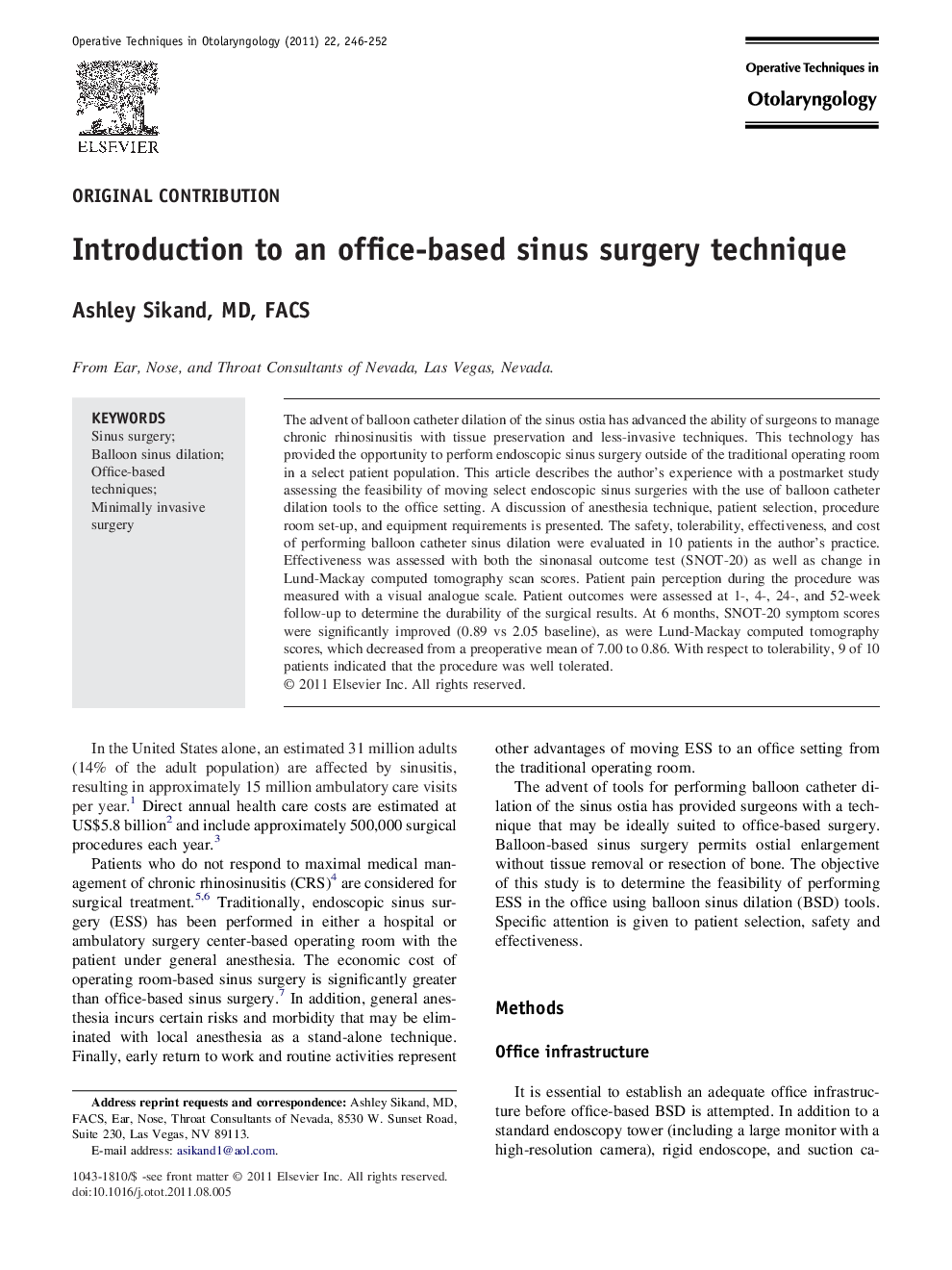| Article ID | Journal | Published Year | Pages | File Type |
|---|---|---|---|---|
| 4122864 | Operative Techniques in Otolaryngology-Head and Neck Surgery | 2011 | 7 Pages |
Abstract
The advent of balloon catheter dilation of the sinus ostia has advanced the ability of surgeons to manage chronic rhinosinusitis with tissue preservation and less-invasive techniques. This technology has provided the opportunity to perform endoscopic sinus surgery outside of the traditional operating room in a select patient population. This article describes the author's experience with a postmarket study assessing the feasibility of moving select endoscopic sinus surgeries with the use of balloon catheter dilation tools to the office setting. A discussion of anesthesia technique, patient selection, procedure room set-up, and equipment requirements is presented. The safety, tolerability, effectiveness, and cost of performing balloon catheter sinus dilation were evaluated in 10 patients in the author's practice. Effectiveness was assessed with both the sinonasal outcome test (SNOT-20) as well as change in Lund-Mackay computed tomography scan scores. Patient pain perception during the procedure was measured with a visual analogue scale. Patient outcomes were assessed at 1-, 4-, 24-, and 52-week follow-up to determine the durability of the surgical results. At 6 months, SNOT-20 symptom scores were significantly improved (0.89 vs 2.05 baseline), as were Lund-Mackay computed tomography scores, which decreased from a preoperative mean of 7.00 to 0.86. With respect to tolerability, 9 of 10 patients indicated that the procedure was well tolerated.
Related Topics
Health Sciences
Medicine and Dentistry
Otorhinolaryngology and Facial Plastic Surgery
Authors
Ashley MD, FACS,
